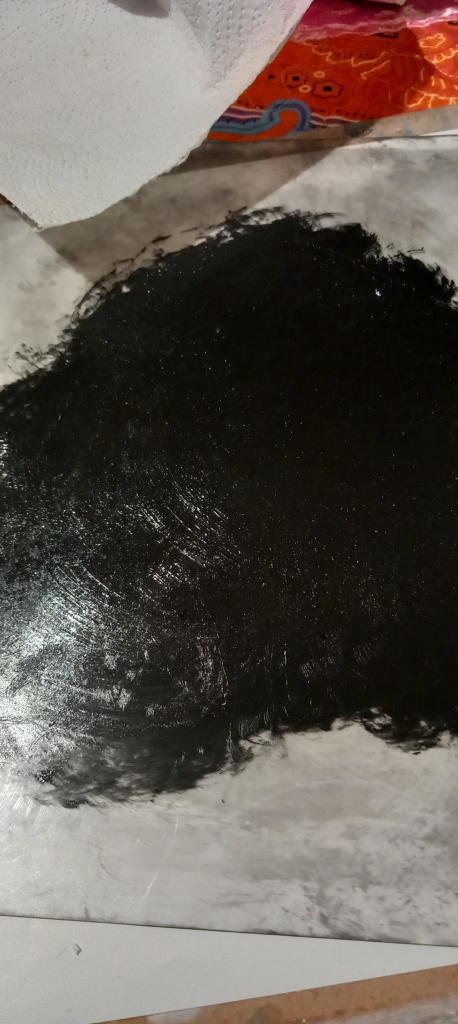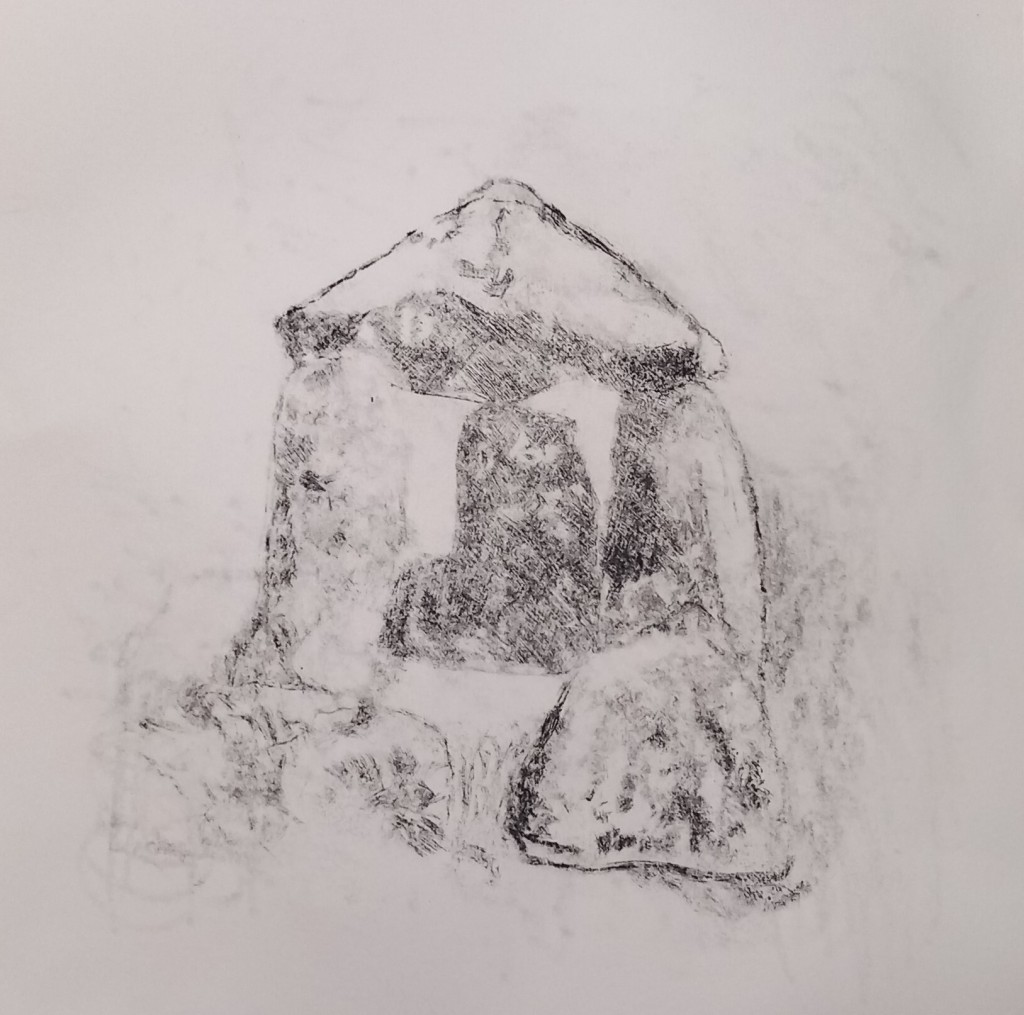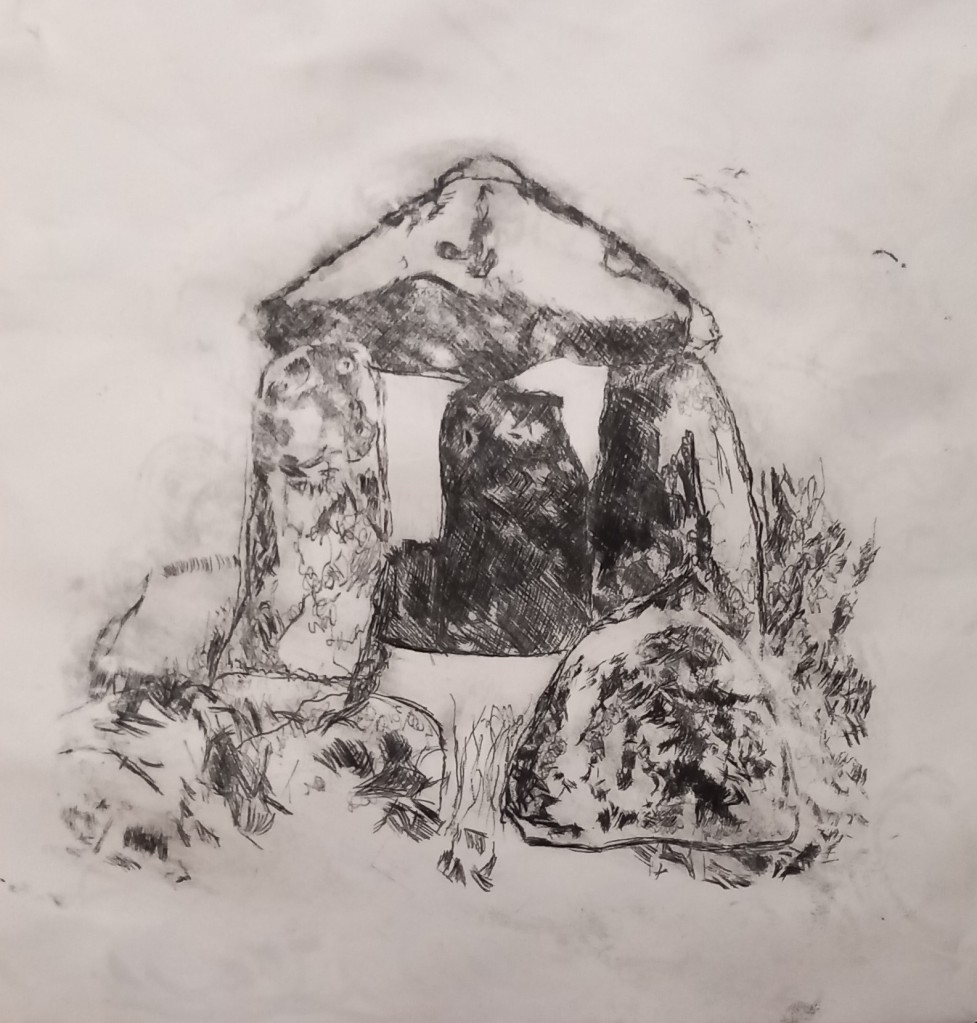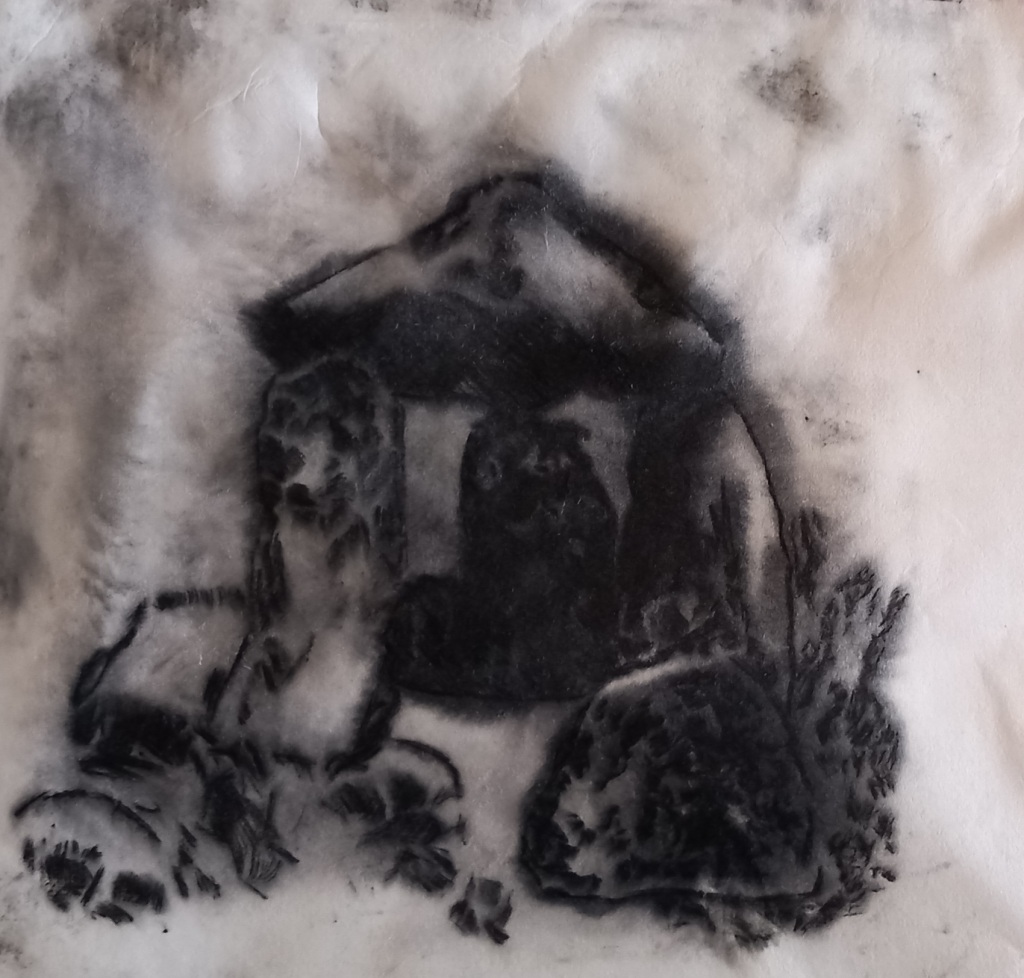I have been reworking an older plexiglass drypoint study I did a while back of a dolmen (duh, what else). I received an electric engraving tool set for my birthday from one of my good friends (and art patron 🙂 ) … so thought I’d see how it performed on the plastic. I really enjoy doing dry point printing, as it’s quite tactile and relatively easy to do. You don’t need to roll out ink onto a surface and then apply with a roller or brayer – you can just squeeze the ink out directly onto the plate and rub in gently with paper towels and bits of rag. Then once you have wiped off the excess ink, you can print.

I used the back of a metal measuring spoon to do the printing this time – although when I go for my next printing workshop next week, I will be able to use the actual press – quite excited to see how the two processes will compare.
I made three prints in total – first one was using Fabriano all media paper. In all cases the paper is soaked in cold water first, allowed to dry so that it’s not shiny and then used for the print.

It is very indistinct, largely because of the thickness of the paper and me taking off just a bit too much ink. If this had gone through the press, it would have been far more successful. I still like it though.
Next, I tried plain old cartridge paper – from my A2 sketchpad – I cut two pieces to size.

The result of the lighter paper is obvious – far more detail from the marks has come through and it’s not gloopy or too dark. Drypoint typically creates a soft edge (almost furry), which is what I love about it. I was pleased with this but wondered if it is was a ‘one off’, could I do it again?

Well yes, I can repeat the process – this time I didn’t remove as much of the ink and it has created quite a strong print. Spot the gloop though. (Left hand orthostat – lol).
It’s fascinating (for me) to compare earlier attempts at this same subject. The first set done from the original etching, I made use of a dampened Japanese paper (which is furry to begin with) and the ink bled all over the place.

Despite it’s ‘furry’ appearance, I really like this one, it has a kind of mystery about it.
Anyway, I am pleased with all of these attempts and my printmaker friend is also interested to see how well the plate performs under an actual press – can’t wait to show the results of that experiment later on this month.